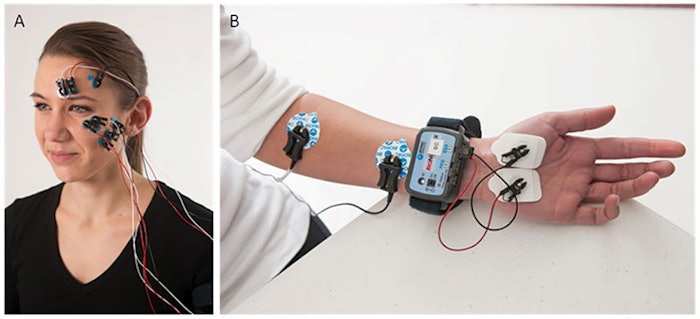
Editor's note: This is part of a three-part series on applied neuroscience for cosmetic product development. Part I defines neuroscience; Part II demonstrates a study to understand the consumer; Part III shows how the described concepts can be applied to product development.
Neuroscience has become a hot topic in consumer research. The high failure rate of new market introductions—despite initial successful testing with traditional sensory and consumer tests, as is often seen in food development—necessitates the development of new approaches and methodologies.1, 2 This might be due to a low predictive validity of traditional sensory and consumer tests, which include sensory analytical profiling and liking tests. These tests require cognitive information processing and rational reasoning, whereas consumer behavior might be more based on unarticulated/unconscious motives and associations.
Neuroscience can help market researchers and product developers better understand both their consumers and how their product is performing. Through measuring the non-conscious consumer response to products, concepts and before/after results, it is possible to make decisions for product development and marketing, as well as develop product claims. Here, the authors discuss these possibilities as well as two case studies.
Defining Neuroscience
First, it is important to clarify what using applied consumer neuroscience means. In the purest of definitions, neuroscience is the study of the nervous system.3 It can be seen as a branch of biology or psychology, but is truly an interdisciplinary approach combining the fields of chemistry, computer science, engineering, linguistics, mathematics, medicine, genetics, philosophy and physics. Technologies and methodologies of neuroscience can range from molecular and cellular approaches, to brain imaging and behavioral analysis. Clearly, neuroscience is a broad field.
Applied consumer neuroscience, a term coined and defined by the current authors, can be described as a combination of neuroscientific, psychological and traditional market research methodologies to better understand consumer behavior and non-conscious interactions with products. The more popular evaluation methods include biometrics, such as heart rate (HR) variability, galvanic skin response (GSR), facial electromyography (fEMG), etc., as well as functional magnetic resonance imaging (fMRI) of the brain. However, the usefulness and validity of some technologies, specifically fMRI and electroencephalography (EEG), for consumer research is a topic of debate, as the results can depend on cost and variability in the quality of the technology. Psychological methods, such as implicit association, priming paradigms and state-and-trait batteries, can also be used to assess consumer responses and emotion.
The combined effect of all these factors on product choice is mediated by emotional responses. Frijda4 distinguishes the following elements of emotions: affect or the hedonic pleasure of products; appraisal of products, in terms of good/bad or pleasant/unpleasant; action-readiness, i.e., whether or not the product is used/purchased; and autonomic arousal, reflecting the degree of motor preparation for the actions of using or purchasing a product.
Affect and appraisal typically are assessed explicitly via questionnaires. Action-readiness and autonomic arousal are often assessed implicitly, with physiological measures of the autonomic nervous system (ANS).5
More recently, it has been suggested that various aspects of stimuli are appraised sequentially,6 whereby each type of appraisal is associated with specific physiological, expressive and motivational changes. Aue and colleagues7 presented study participants with pictures that displayed biological and cultural threats or neutral stimuli, and demonstrated through EEG and facial muscle activity that relevance appraisal interestingly preceded goal-conduciveness appraisal. Similarly, Delplanque and colleagues,8 using facial muscle and electrodermal activity with olfactory stimuli, demonstrated that novelty reactions preceded pleasantness reactions.
In the present studies, the authors used a combination of biometrics, including HR, GSR and fEMG; eye tracking; and psychological assessment. ANS and facial muscle responses to the stimuli were recorded. Responses were monitored continuously during stimulus exposures to allow for the testing of sequential appraisals.
(continue to Part II)
References
- C Crawford, Marketing research and the new product failure rate, J Marketing 41, 55–61 (1977)
- H Evanschitzky, M Eisend, RJ Calantoneand Y Jiang, Success factors of product innovation: An updated meta-analysis, J Product Innovation Management 29(S1) 21–37
- ”Neuroscience,” merriam-webster.com/dictionary/neuroscience (Accessed Jul 16, 2105)
- N Frijda, Emotions and hedonic experience, in: D Kahneman, E Diener and N Schwarz, eds, Well-Being: The Foundations of Hedonic Psychology, Russell Sage Foundation, New York (1999) pp 190–210
- SD Kreibig, Autonomic nervous system activity in emotion: A review, Biol Psychol 84 394–421 (2010)
- PC Ellsworth and KR Scherer, Appraisal processes in emotion, in: RJ Davidson, KR Scherer and HH Goldsmith, eds, Handbook of Affective Sciences, Oxford University Press, New York (2003) pp 572–595
- T Aue, A Flykt and KR Scherer, First evidence for differential and sequential efferent effects of stimulus relevance and goal conduciveness appraisal, Biol Psychol 74 347–357 (2007)
- S Delplanque et al, Sequential unfolding of novelty and pleasantness appraisals of odors: Evidence from facial electromyography and autonomic reactions, Emotion 9 316–328 (2009)




!['We believe [Byome Derma] will redefine how products are tested, recommended and marketed, moving the industry away from intuition or influence, toward evidence-based personalization.' Pictured: Byome Labs Team](https://img.cosmeticsandtoiletries.com/mindful/allured/workspaces/default/uploads/2025/08/byome-labs-group-photo.AKivj2669s.jpg?auto=format%2Ccompress&crop=focalpoint&fit=crop&fp-x=0.49&fp-y=0.5&fp-z=1&h=191&q=70&w=340)





